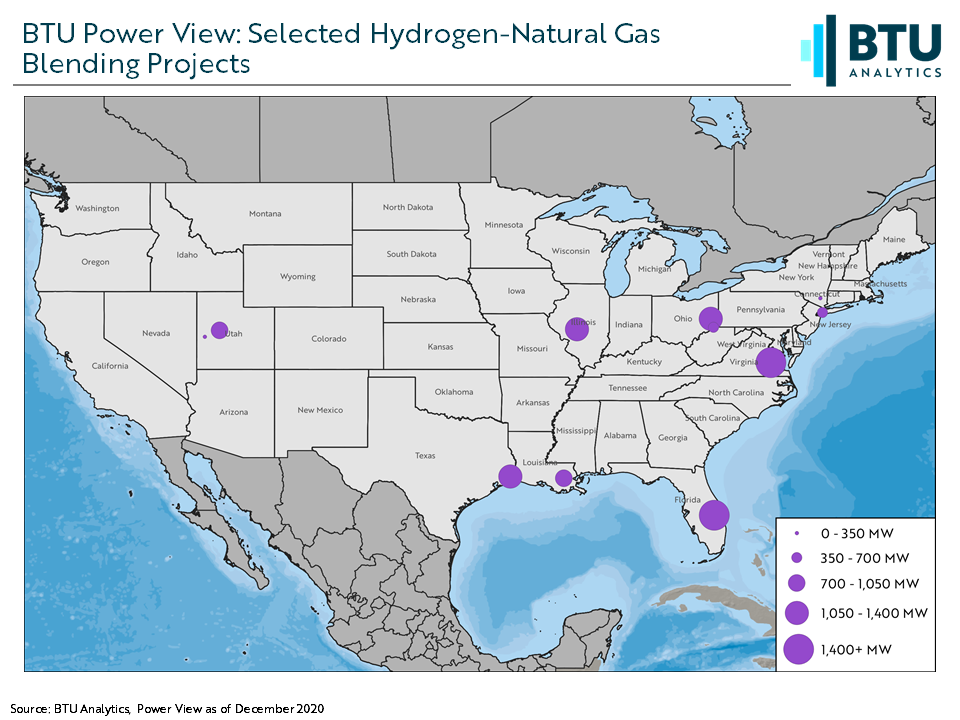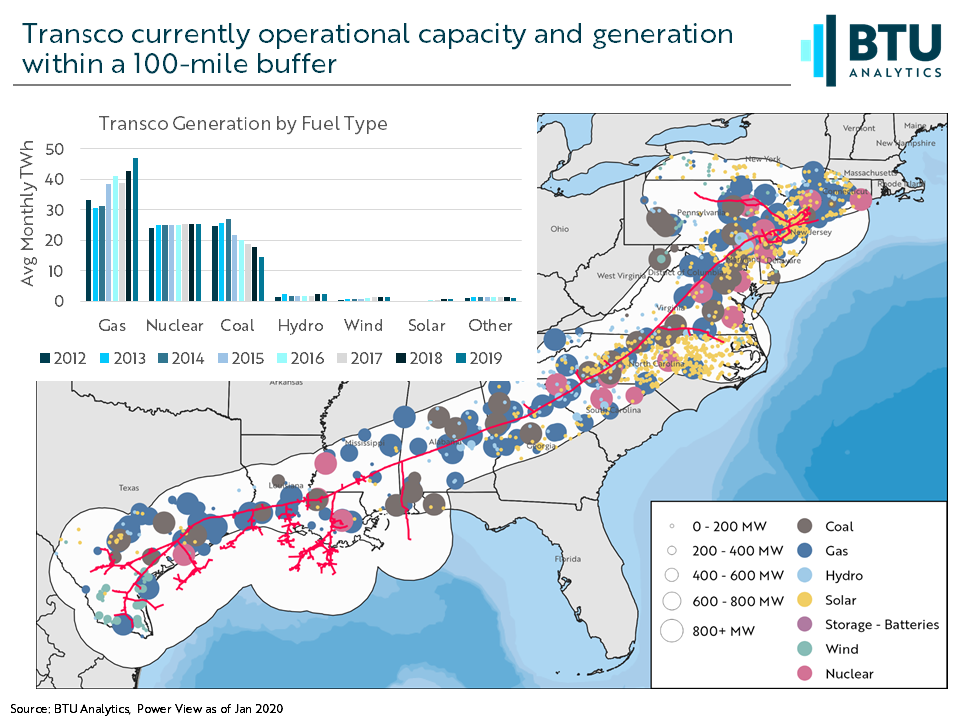Green hydrogen has become the latest hot topic in the energy industry. Environmental, Social, and Governance (ESG) investment criteria are driving natural gas consumers and natural gas fired power plants to ask questions about availability of green hydrogen blended with natural gas (H2-NG) at the natural gas pipeline meter. In addition to evaluating the ability of pipelines to bring blended gas streams to the customer, several power plants are looking to build co-located green hydrogen production facilities powered by renewables. For natural gas pipelines and natural gas distribution companies, green hydrogen offers an opportunity to make a green pivot while leveraging their existing asset and customer base. With the interest in consuming green hydrogen growing, renewable energy developers with assets near natural gas pipelines may have new potential demand sources for their electrons without the need for developing new long-haul electric transmission infrastructure. In this Energy Market Insight, we will look at an example of the power landscape around Transco pipeline and how it could be used to facilitate green hydrogen.
In the US, several green hydrogen pilots are on the leading edge of how existing natural gas power plants and green hydrogen could complement each other. One such project is NextEra’s 20 MW green hydrogen electrolyzer powered by a solar farm located at FPL’s 1.7 GW Okeechobee Clean Energy Center, a gas plant located in Okeechobee County Florida. At this project, green hydrogen will be created on site using solar power to run the hydrogen electrolyzer and the hydrogen will be blended with natural gas to be burned at the gas plant. BTU Analytics has started tracking existing and under development gas plants with plans to burn an H2-NG blend as shown below in BTU Analytics’ Power View.

This pilot project is but a steppingstone in the economics and development of green hydrogen electrolysis and blending. Much of the existing natural gas consumption lies in dense urban areas where collocating renewable assets will be challenging. The next logical path would be to locate electrolyzers in areas with excess renewable resources proximate to existing natural gas pipelines. The below map shows the Transco Natural Gas pipeline and all currently operational power plants within 100 miles of the pipeline.

Transco natural gas pipeline is over 10,000 miles long and spans the eastern half of the US. Transco delivers natural gas to 13 states from Texas to New York. In Q4 2020, Transco delivered 6.7 Bcf/d of natural gas to utilities, power plants, and industrial end users. Deliveries to natural gas power plants represented 43% of natural gas demand served by Transco.
From a power market perspective, Transco pipeline sits within 100 miles of over 328 GW of existing power capacity. To put this in perspective, the US L48 has 1.1 TW of total capacity across all fuels. Today, natural gas, nuclear, and coal account for 94% of total generation within the Transco buffer. Conversely, wind and solar current capacity represents a small fraction of the power market with 8.4 GW and 7.2 GW of capacity, respectively. However, significant new investments in the footprint are underway as shown on the map and chart below.

In terms of go forward power development, solar leads the fuels under development with 55 GW across all development phases. Of the 55 GW proposed, 21 GW of projects are under advanced development and are likely to come into service in the next three years based on permitting progress. Meanwhile, 18 GW of wind is under development and 7 GW of projects are in advanced development. Many of these renewable development projects are likely committed to power purchase agreements (PPAs). Areas with strong development, solar in Texas, for example, show where potential exists along the pipeline asset footprint for potential green hydrogen plant development and deliveries to existing and planned gas plants with H2-NG blended capacity.
As mentioned earlier, while we are still in early innings with green hydrogen, expect to see more announcements of green hydrogen electrolyzers paired with renewable assets proximate to gas plants capable of burning an H2-NG blend. Also look for more announcements of green hydrogen storage, which so far has been a few cases in Ohio and Utah. Expect to see more and more gas plants announce H2-NG blending plans. To learn more about green hydrogen, renewables, and natural gas infrastructure, tune to BTU Analytics webinar on ‘Green Hydrogen and Renewables: Creating Opportunity for Pipelines’ on February 2, 2021.








